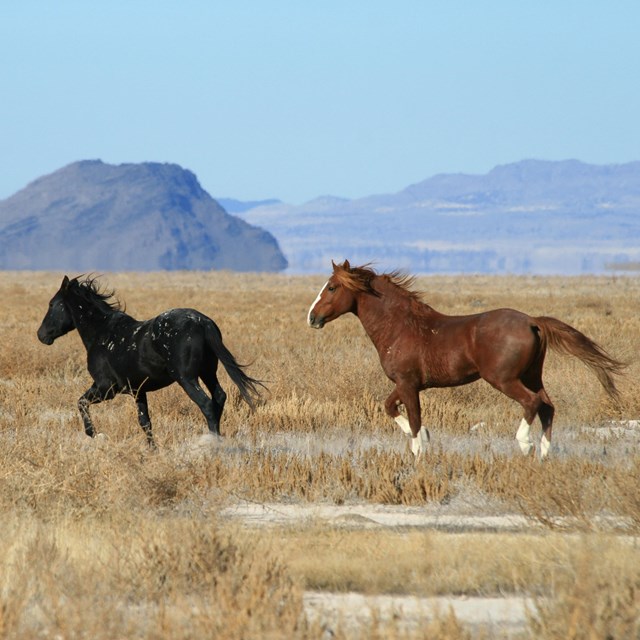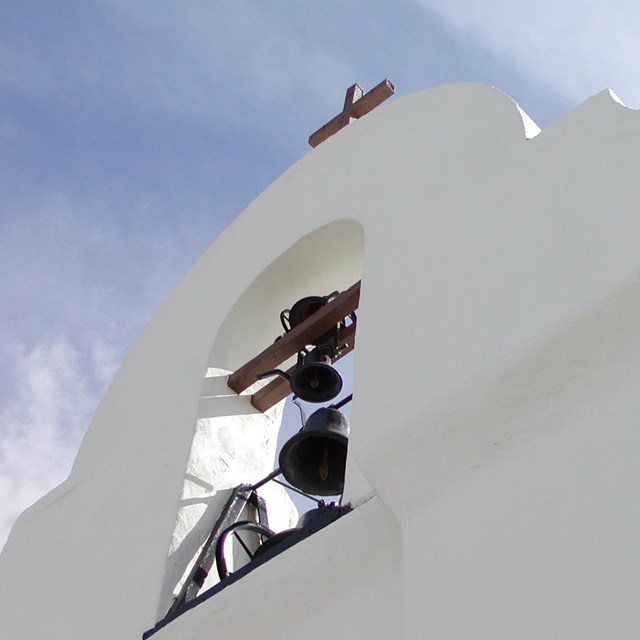A Brief History
During the Spanish colonial era, New Mexico was linked to the outside world by a single thoroughfare that descended the Rio Grande Valley from north of Santa Fe, dropped through the natural gate at El Paso, and wended its way via the provinces of the Viceroyalty of New Spain to Mexico City, some twelve hundred miles to the south.
This artery of commerce and travel came to be known as El Camino Real de Tierra Adentro, which meant ‘royal road’ or ‘king’s highway.’ Blazed atop a network of indigenous footpaths and trade corridors that connected Mexico's ancient cultures with the equally ancient cultures of the American Southwest, this highway was the oldest of the great highways heading north. Extended by segments throughout the 16th century, it was at one time the longest road in North America.
The settlement expedition of 1598, led by Juan de Oñate, brought settlers, priests, soldiers, indigenous and mestizo guides and servants into today's New Mexico. It also defined the full length of the trail as we know it today. The northern end of that trail, and the primary Spanish settlement, was initially located at Ohkay Owingeh (San Juan Pueblo), but in 1600 it moved to nearby San Gabriel del Yungue. Ten years later, Santa Fe became the capital of the Spanish province of Nuevo México. Once these settlements were established, the trail became a lifeline back to central Mexico.
El Camino Real de Tierra Adentro served a variety of purposes. Many of its users were involved in the Spanish empire’s prolonged project of converting American Indians to Christianity, yet the road hosted a diverse array of characters; people headed northward included settlers, priests, and newly appointed officials, while those headed south included retiring officials, friars, traders, enslaved Indians, convicts, and prisoners of war. The trail also served as a principal avenue of communication and commerce by which goods and information flowed back and forth. Caravans along the route typically consisted of thirty-two wagons, each of which was hauled by eight mules and carried about 4,000 pounds of freight; most caravans brought other stock as well, such as cattle, sheep, goats, burros, and chickens. Royal decrees, mail, mission supplies, and private merchandise was included among the freight.
Traffic over the trail came to an abrupt halt in 1680 when an Indian revolt, led by the Ohkay Owingeh Pueblo religious leader, Popé, forced all Spanish residents—along with many Indians from Isleta and Socorro—to leave Nuevo México and retreat south to what is now El Paso, Texas and Juárez, Chihuahua. During their stay in that area, they built three missions, Ysleta, Socorro, and San Elizario, all of which still stand. In 1692, however, the Spanish army, under Diego de Vargas, reconquered Nuevo México and recolonized formerly abandoned pueblos and missions.
Over the next 200 years, the trail continued to witness periods of conflict and peace, as well as representatives of different cultures that brought with them currents of change that would forever alter the face of this land. El Camino Real de Tierra Adentro remained active throughout the Spanish period (until 1821). After that date, traders along the Santa Fe Trail supplied New Mexico with American goods during the relatively brief Mexican period (until 1846), and for the first several decades of American rule. Long distance traffic over the royal road ceased when the Atchison, Topeka and Santa Fe Railroad was completed from eastern Kansas to Santa Fe (in February 1880) and on to El Paso (in June 1881).
Significance
El Camino Real de Tierra Adentro is recognized throughout the United States of America and Los Estados Unidos de México as a timeless route of trade and cultural exchange. Trade and travel on this trail shaped individual lives and communities, affecting the settlement and development of the greater Southwest. Recognition of this route as an international historic trail commemorates the multicultural connections and interactions between American Indians, Mexican, Black, Spanish, and other European cultures then and now, and contributes in a meaningful way to eliminating cultural barriers and enriching the lives of people along El Camino Real de Tierra Adentro.


